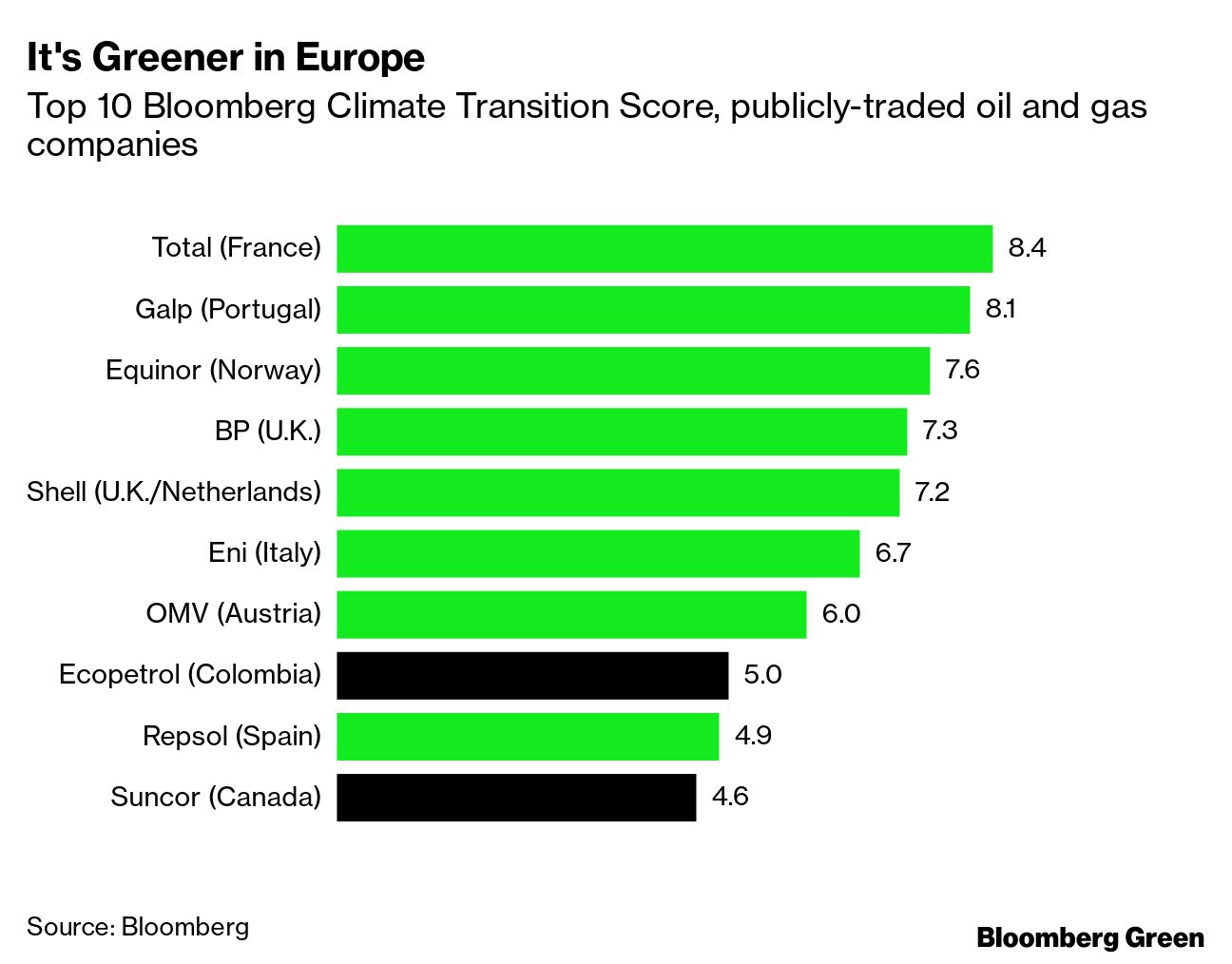(Bloomberg) —
A number of the world’s biggest companies have made significant commitments to decarbonize their businesses. Some of them set emissions intensity targets; some of them set time limits on reaching net-zero emissions; some of them align with the targets outlined in the Paris Agreement.
Many of these targets are useful; all of them inform company strategy. What they do not do, for the most part, is allow investors and policymakers to score companies against each other in a straightforward way.
In response to the need for comparability, Bloomberg Intelligence and BloombergNEF have developed the Bloomberg Climate Transition Score, what companies are doing about emissions, what their current low-carbon strategies are, and just how far they have to do to meet their own targets. Yesterday, Bloomberg Green Good Business columnist Tim Quinson took a close look at how companies scored in this first round of scoring, involving 39 oil and gas companies (spoiler: the Europeans are top of the board). Today, I’ll examine the scoring effort itself, including one of the trickiest and most important aspects of any such endeavor: how to measure the future.
Each climate transition score is actually a combination of two, related scores. The first, from Bloomberg Intelligence, shows how a company is performing on its greenhouse gas emissions-reduction goals. Only 12 of the 39 companies have established net-zero goals for their operational emissions; only five include ‘Scope 3’—emissions from the supply chain plus the use of their products, by far the largest share of most oil and gas companies’ greenhouse output—in those pledges; and only seven will have aligned themselves with the International Energy Agency’s Sustainable Development Scenario by 2030.
Carbon commitments, though, are only part of the challenge. That’s where BloombergNEF’s side of the score comes in, measuring the extent to which companies are exposed to the climate transition—and how exposed they’ll be in the future.
Taking that measure requires overcoming two challenges. First, companies talk—and talk, and talk—about their plans for the energy transition, but they don’t actually release much data. That’s as much an artifact of accounting as it is a matter of strategy: given the size of many oil and gas majors, even an objectively large investment in something like wind power or battery storage may not be big enough to warrant disclosure in financial results. Fortunately, we can analyze the corporate data BNEF has collected on 10 decarbonization activities, ranging from developing renewable energy capacity to investing hydrogen projects to installing EV charging points. Doing so gives us a like-for-like comparison across every company’s current efforts to decarbonize.
The second challenge is quite obvious: we don’t have any data about the future. Thus, BNEF had to develop a metric based on companies’ long-term strategies, including how much they intend to expand their high-carbon activities, how forward-looking their management is, and, crucially, how scalable their strategies are.
Scalable strategies are key to changing the world’s greenhouse gas emissions trajectory, of course, but they’re also crucial to a company’s own ability to adapt (or not) to climate change. Nifty early-stage strategies such as planning to remove carbon dioxide directly from the atmosphere could be promising, but only if they scale. Mature, but perhaps less-exciting strategies such as investing billions in onshore wind and solar power may not attract as much attention, but they’re already on the path to planetary scale already.
As for the results of the scoring? European companies have eight of the top 10 high climate transition scores.

It’s the two non-European companies, though, that interest me most. Ecopetrol is based in Colombia, has one-quarter of the market capitalization of Total SE, the highest scorer, and just one-eighth the revenue. Suncor, meanwhile, has focused its business on oil sands, one of the most energy-intensive and high-emitting forms of oil production. Their scores are a testament not to capitalization, or to today’s commitments, but to their plans for a future that will all but require radically lower greenhouse gas emissions.
Nathaniel Bullard is BloombergNEF’s Chief Content Officer
To contact the author of this story:
Nathaniel Bullard in Washington at nbullard@bloomberg.net
© 2021 Bloomberg L.P.





